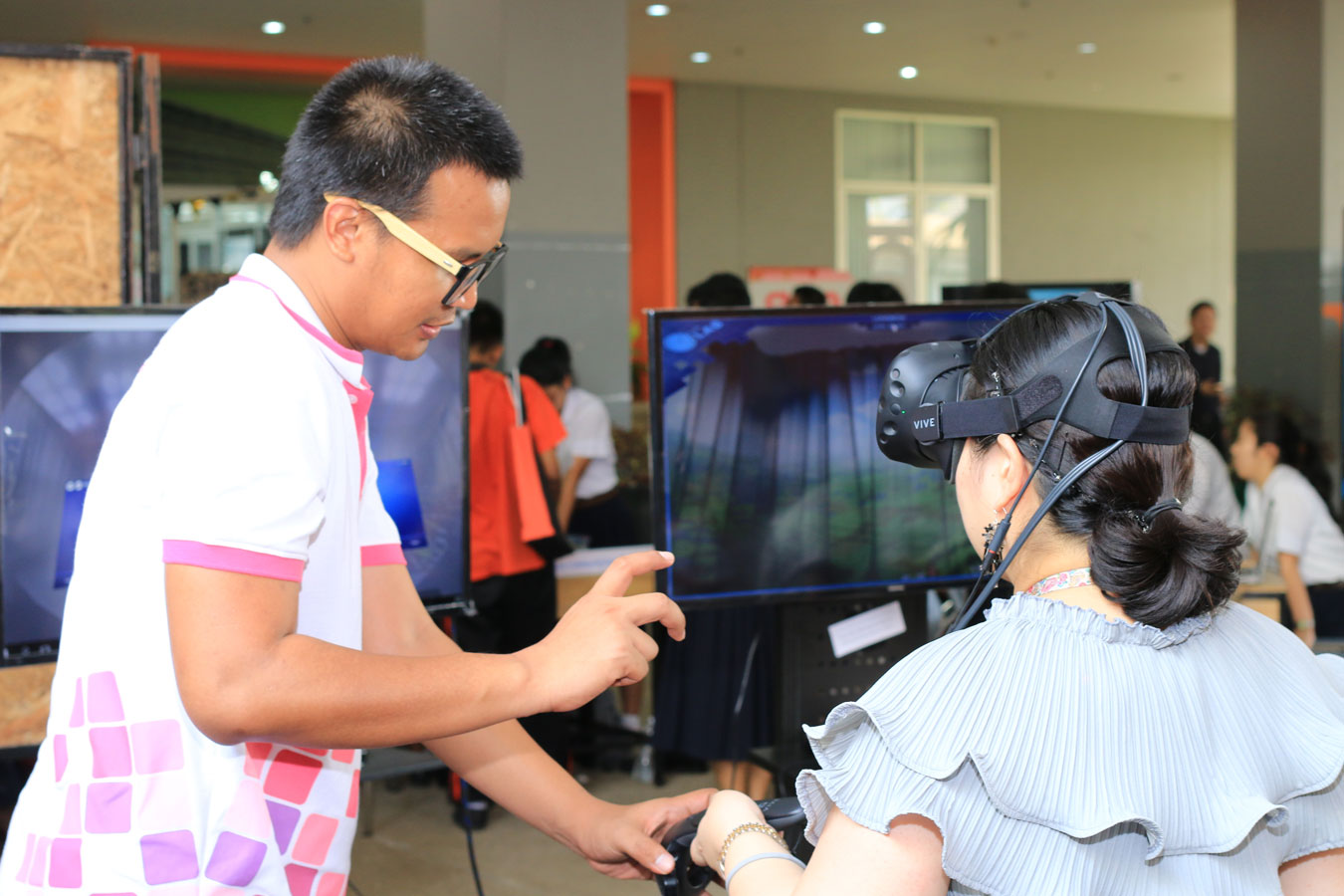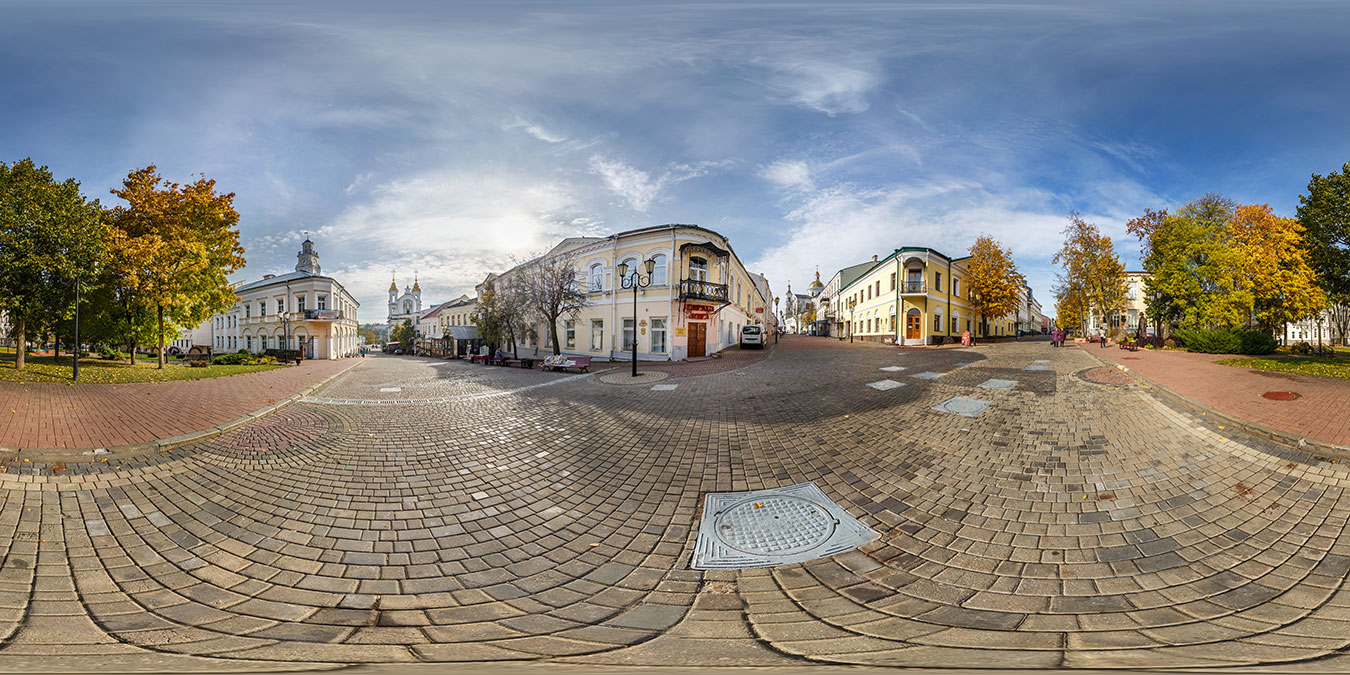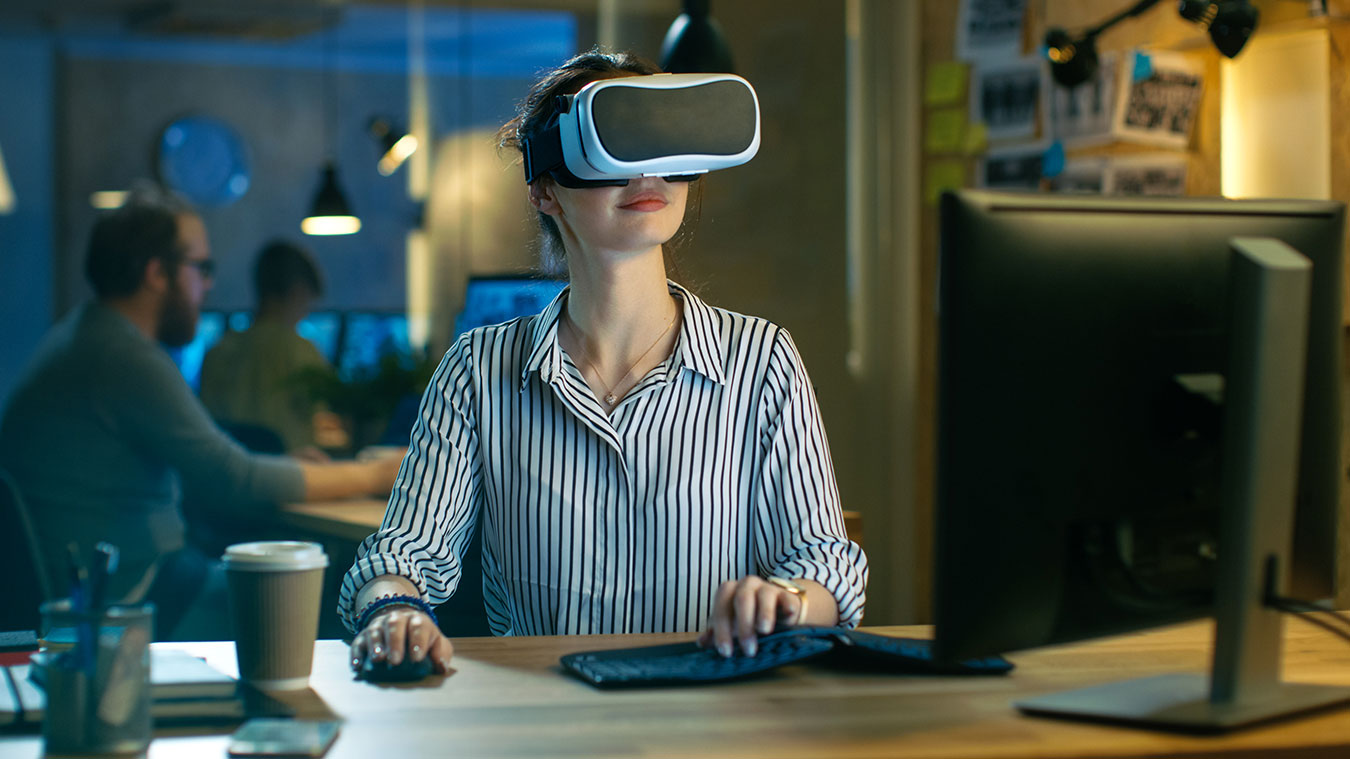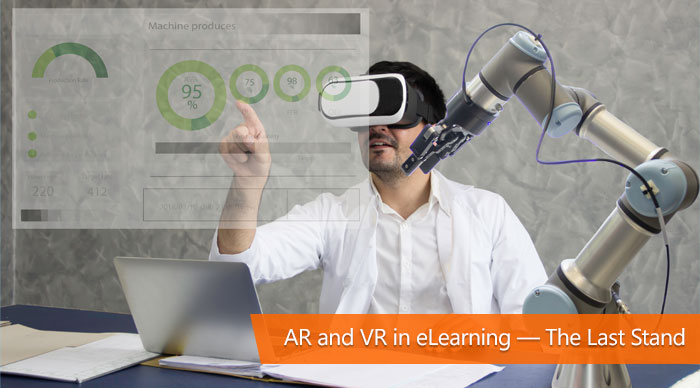AR and VR in eLearning is exactly what this simulation and augmentation based technology was designed for. And for eLearning—the training method of the future—what could get more technologically advanced than AR and VR? Augmented Reality (AR)—an interactive experience where objects residing in the real world are ‘augmented’ by computer-generated images and animations. Virtual Reality (VR)—a ‘computer generated’ experience created inside a simulated environment.
The terms AR and VR often captivate the minds of most. When we hear of these terms, we think of the future. We think of the possibilities. We think of a matrix-like immersive system inside which the human mind endlessly wanders. All of what is mentioned is true, yet AR and VR are struggling to take off.
There are many issues holding this technology back. Sticking to just one as a definitive reason would be unfair. Expensive units, bulky headgear, lack of quality content, and a handful of vendors trying to create (unsuccessfully) immersive experiences have all contributed to its sluggish take-off.
However, there is one reason that slightly trumps the rest. AR and VR successfully convinced the world about its limitless applications, but it really failed to seal itself as a must-have technology aimed at solving a real-world problem. It even failed to cement itself as a legitimate alternative to any current form of entertainment. For many, AR and VR are just party tricks to impress guests. For others, the excitement of AR and VR died even before it really started.
But this is where things will change. AR and VR still have a chance. eLearning and the training space is its last bastion, and a mighty one it is.
On this Page
AR and VR in eLearning

Although nascent, this is one avenue where everybody sees an opportunity. You see, training and development using eLearning is still a strong reason for a person to pick up a headset, bolster it to their faces, and immerse themselves in a simulated training environment. Think about it. We are already training people using older-gen simulation-based training. Pilots learn in simulator cockpits, doctors learn using 3D-simulation-based software, and designers are delving into 3D-imaging software to study designs from all angles.
What would the next logical step be?
At its core, training has always relied on visual and auditory stimuli to deliver impactful training. We are already leveraging animated courses, interactive videos, simulated 3D-environments on a flat screen. Then why not include the added dimensions of the sense of space, direction, and movement that AR and VR bring with it?
In these cases, AR and VR, when used for training purposes, suddenly packs an earth-shattering effect—something it desperately missed before. Where people once saw it as a gimmicky product, today, training and development is where it is cementing its importance. From designing to visualization to pre-manufacturing, its importance in the world of conceptualization and training is noticeable.
Medical and healthcare, both manufacturing and the medical practices sides are already leveraging AR and VR as a training tool. Precision manufacturing of machinery—from aeroplanes to technical products—AR and VR allow engineers to work with computer models of the product at scale! From resources exploration training to remotely viewing the insides of a structure—miners, builders, explorers, rescuers, and all the other job roles affiliated with this industry are now inside anything, anywhere, whenever they want!
That is not all, retail giants Walmart, purchased 17,000 devices to train their employees on the intricacies of delivering the best in-store experience in an attempt to combat online shopping and its growing dominance. Corporates have already identified the importance of AR and VR, and if their analysts see a reason to invest in them, be sure, it’s a good reason why.
How soon is it before AR and VR gain greater traction within the eLearning space?
For AR and VR to gain greater traction, a few things need to fall in place:
Affordable technology
AR and VR are amazing training tools, but they aren’t price friendly just yet. The cost of owning and operating these devices are on the higher side. Top-of-the-line AR and VR sets demand heavy-duty computing specifications in order to operate just one device. Multiplied by a minimum of 50-60 devices—the prices aren’t attractive. For businesses, training institutes, and researchers to harness its potential, the ROI must justify the cost of owning, operating, and updating these devices. Thankfully, controlling the high costs of technology is possible through mass acceptance and usage.
Improved quality of AR and VR based eLearning Content

Compromising the content quality is not an option. AR and VR thrive on delivering an immersive experience. This means completely ‘simulating’ or ‘augmenting’ real-world scenarios and applications. Some vendors skipped corners to deliver affordable/low-cost content which unsurprisingly left a bad taste in the mouths of early adopters, fuelling its slow take-off in the general consumer market. The eLearning space cannot afford this. Training and development have no place for compromised content. Again, mass acceptance should help with balancing the costs of developing quality AR and VR content.
Access and device limitations
AR and VR are available in two forms—PC and mobile. Currently, both formats have their set of minor drawbacks. Accessing PC based devices is not easy. They are expensive and bulky, and hence cannot be moved. Learners are left with the only option of accessing them at work or at a dedicated training venue. Personal mobile phones, however, are very accessible. But some smartphones are limited in features. Gyroscope, magnetometer, accelerometer, and touchscreen sensors are a minimum. Although fairly common, their prices bottom out at a specific threshold, below which they are unavailable. Furthermore, smartphones used in the AR and VR mode tend to overheat easily. Smartphone tech-giants are introducing new technologies like liquid cooling. However, only flagship devices currently sport them.
Simplified usage

Finally, the only thing holding back AR and VR technology is the lack of a simple plug and play option. AR and VR require users to download applications with complicated settings. Simply inventing an easy integration application can solve this. However, the lack of current demand and the uncertainty around the preferred future AR and VR platform (PC or mobile) for the purpose of training and development has not motivated anyone to get in and do it. But certainly, as the above-mentioned pieces fall in place, this one will take care of itself.
As you can tell, AR and VR may not have bloomed where people had once expected. However, it is successfully a part of the training and development space and is certainly here to stay. At eNyota Learning and Abara LMS, we are taking AR and VR seriously. Currently, our research on improving the technology is in full swing. AR and VR content will soon train most corporate, scientific, and research-based disciplines. Our focus is on quality and we can’t contain our excitement either.
If you’re interested in talking about AR and VR based content and the efforts we are pouring into it, write us up at contactus@enyotalearning.com orcontact@abaralms.com. You can also fill this call-back form and we’ll get back to you shortly!
Meanwhile, embrace the future and happy learning!


